Commentary &Photos 29 Mar 2009 08:22 am
Fire Escapes Fotos
- Fire Escapes are among the obvious to anyone walking down the street and yet almost invisible to the everyday eyes that expect them to be there.
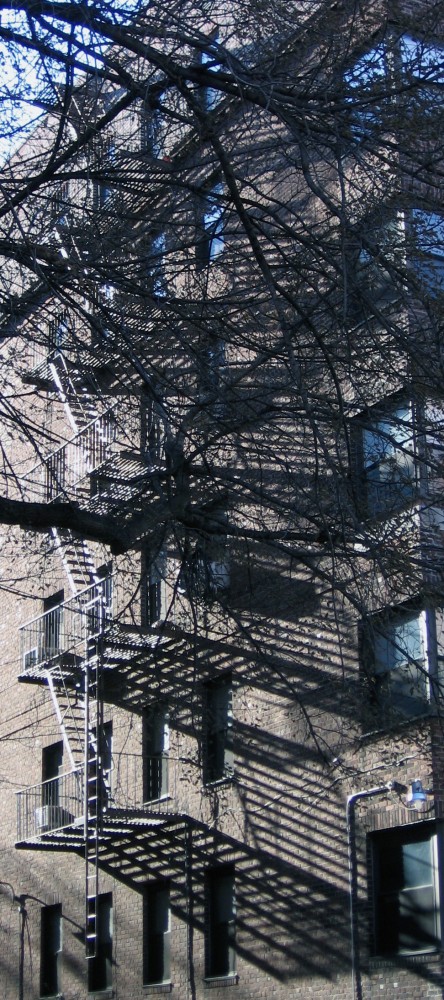
(Click any image you’d like to enlarge.)
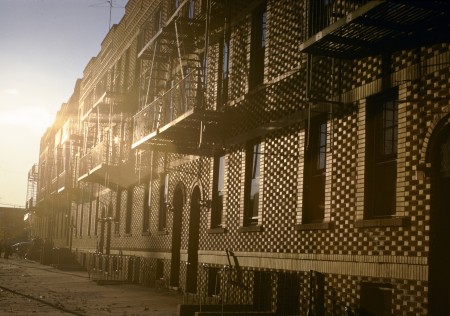
A couple of photos sent me by Steven Fisher showcasing fire escapes
among their own shadows inspired me to start looking anew for these
appendages to many older buildings. The two above are by Steve.
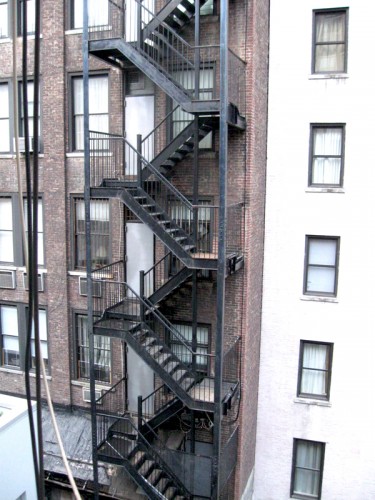
I used to believe that fire escapes were designed to be in the back
of buildings hiding from the public. Designed only to allow an alternate
escape from the building in case a fire arose.
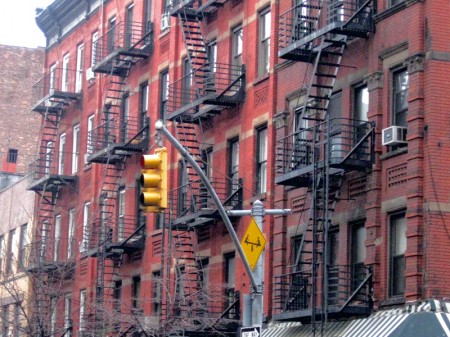
However, it’s obvious this isn’t true. Older buildings have
no shame in baring their exoskeletal escape route.
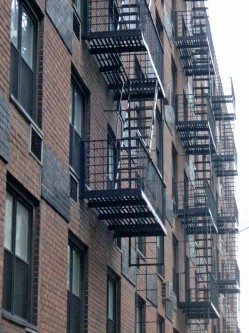
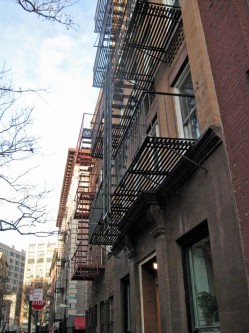
The brownstone just about features the fire escape as a design feature.
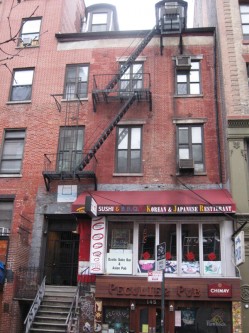
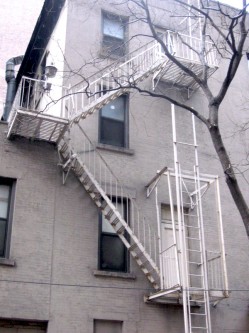
Smaller buildings use smaller fire escapes and
they’re shaped for these buildings.
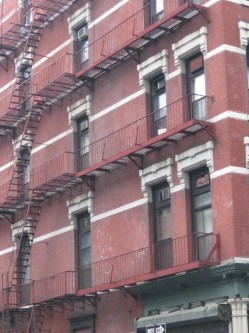
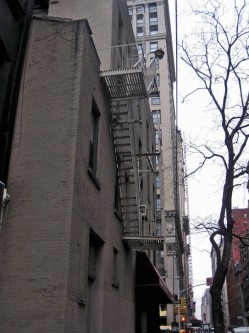
(L) Other buildings have long fire escapes that stretch over
several attached buildings.
(R) Some buldings have tiny shapes that cover small spaces.
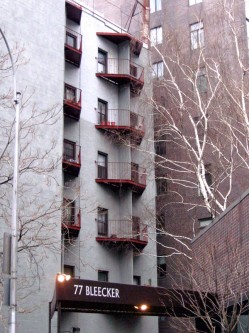
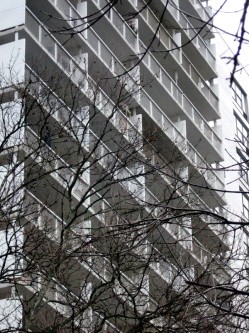
Yet, other buildings don’t have fire escapes. They just
offer “patios” that, essentially, LOOK LIKE fire escapes.
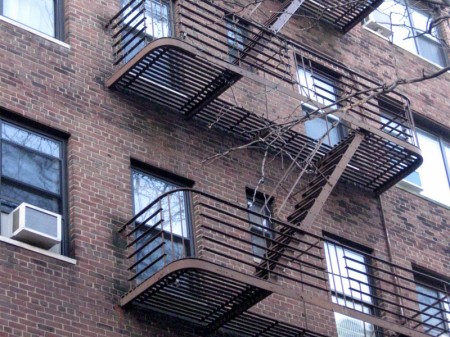
The structure, itself, takes on different shapes as designers
tried to cope with these required exits.
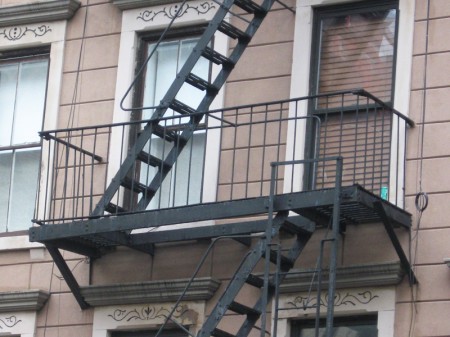
Even some thinner offered a style.
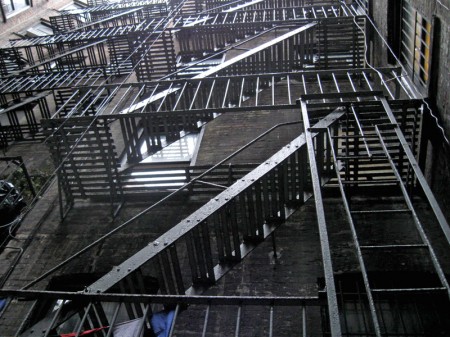
Fire escapes were a brilliant idea, but they don’t look very nice.
If they offer an exeunt for escapees, they also offer a way in for burglars.
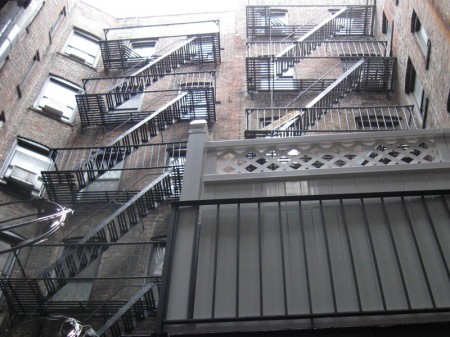
Hence the introduction of the gate guard which prevents intruders
from entering, but that also it makes it difficult for a fast exit.
You can’t win.
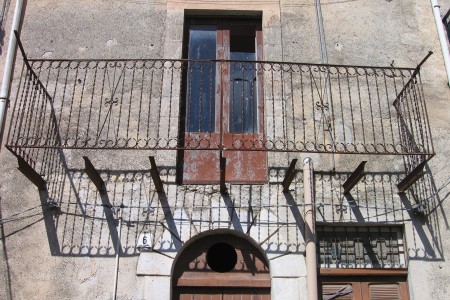
Finally, here’s another picture from Steve Fisher.
It was taken in Caltabellotta. Sicily.
It’s not a fire escape but what is it?
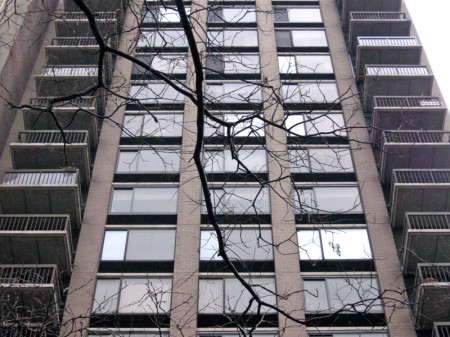

on 29 Mar 2009 at 10:14 am 1.steve said …
At the risk of disseminating erroneous info (again), I am fairly certain that the NYC Building Code allows for fire escapes on existing buildings (as of 1968) and group homes, only. There are criteria their construction must comply with if the buildings are renovated. So slowly but surely, whether they add beauty or higher security risk or not, fire escapes are becoming a thing of the past. Better keep photographing them while you can.
on 29 Mar 2009 at 10:36 am 2.Mark Mayerson said …
Fire escapes and water towers are two of the architectural elements that say Manhattan to me. My mother told me that when she was a girl, she would sleep on her fire escape during heat waves, so they served other purposes besides safety.
on 29 Mar 2009 at 12:03 pm 3.Stephen said …
Have you ever seen the Carnegie Hall’s Fire escape on 7ave side of the building? Attached I found a photo to show http://www.flickr.com/photos/army_arch/3159193605/
To answer your question it looks like a balcony
on 29 Mar 2009 at 12:11 pm 4.Michael said …
Mark, Steve Fisher responded immediately with a beautiful photo of a water tower. I once did a small post about this NY feature, but it may be time to update it.
Stephen MacQuignon, Thanks for the shot of Carnegie Hall. You’re right. It’s a gem.
on 29 Mar 2009 at 5:01 pm 5.Tom Minton said …
In the late 1970′s when Warner Bros updated a section of their fabled “New York Street” backlot, they obtained real wrought iron NYC fire escapes to attach to their brick-faced Burbank standing set for authenticity. These beauties can be seen on either side of the street in the extended rainy climax of “Road to Perdition” featuring Tom Hanks vs. Paul Newman.
on 01 Apr 2009 at 12:39 pm 6.Andy said …
An evocative post… After reading that I’m going to look out for any fire escapes around Scotland.
That last photo looks like, as Stephen says, a balcony – but without a floor.